The daring and imaginative guitarist-composer Bruce Eisenbeil and his sextet both embrace and transcend the bounds of traditional jazz. A unique figure of the cutting edge jazz guitar scene, Bruce Eisenbeil has a dedication to formalism, modernist concerns, and social/political issues not found in the work of his fellow innovators. Focusing on themes of time and memory, Eisenbeil draws from the well of modern music to offer a singular philosophical and artistic vantage point, employing enigmatic narrative structures, resonant orchestration, and lyrical editing patterns to create some of the most provocative and controversial music of our time.
“Gripping . . . The entire piece is a parable of chaos and order . . . Eisenbeil’s breakthrough as a composer and his finest recorded effort as a player to date.” ~ From the liner notes by Francis Davis
Eisenbeil’s Sextet explores original melodic themes and rhythms found not only in the traditions of free jazz and contemporary improvisation but also in the new complexity of modern composition. The band’s philosophy is based on paradoxes and extremes being a necessity in order to achieve balance and the variety of their work discovers contrasts in the weight of sound. This sextet digs into a place where people live not out of necessity but because they want to be part of a future that invites surprise and welcomes spontaneity.
The band’s mission has been to explore their passion for improvisation and musical exploration and to develop a unique musical cohesion through extended performances. The focus is on the art form itself, despite the current trend of image-driven music on the scene today. Eisenbeil’s sextet aims to develop cutting-edge jazz and contemporary improvisation to re-establish substance over hype.
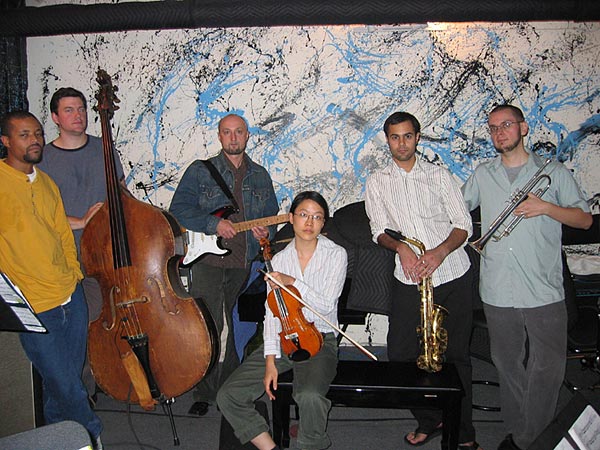
Musicians, left to right: NASHEET WAITS, TOM ABBS, BRUCE EISENBEIL, JEAN COOK , AARON ALI SHAIKH, NATE WOOLEY
EISENBEIL SEXTET
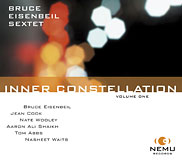 |
INNER CONSTELLATION (NEMU 007) (September 2007) Bruce Eisenbeil (electric and acoustic guitars) Jean Cook (violin) Nate Wooley (trumpet) Aaron Ali Shaikh (alto sax) Tom Abbs (acoustic bass) Nasheet Waits (drums) |
|
Tracks:
|
||
|
|
Critical Acclaim For INNER CONSTELLATION
TOP TEN JAZZ RELEASES in 2007 ~ Stuart Broomer, Signal To Noise
TOP TEN JAZZ RELEASES in 2007 ~ Budd Kopman for All About Jazz
TOP TEN JAZZ RELEASES in 2007 ~ Ken Waxman for CODA
TOP TEN JAZZ RELEASES in 2007 ~ Eyal Hareuveni for All About Jazz
TOP TEN JAZZ RELEASES in 2007 ~ IMPROV.HU
“Bold” • “Scintillating” • “Brimming with fresh ideas and deep modern jazz grooves” ~ David Wayne, JazzReview.com
“Astonishing” ~ Budd Kopman, All About Jazz
“Gripping” ~ From the liner notes by Francis Davis
”Remarkable” ~ The Wire
“Epic” ~ Forrest Dylan Bryant, JazzTimes
“Exquisite” ~ SIGNAL TO NOISE
“Great” ~ CADENCE
“ Powerful” • “Breathtaking” • “Dynamic Masterwork” • “ Astonishing” • “Gifted” ~ DOWNTOWN MUSIC GALLERY
“Engaging” ~ Tom Watson, MODERN GUITARS.COM
“Extreme energy” ~ ALL ABOUT JAZZ NEW YORK
“Beautifully odd” • “Aggressive brilliance” • “Rhythmic firestorms”
~ Stuart Broomer, POINT OF DEPARTURE
“Masterful” • “Remarkable” • “Dynamic” ~ Eyal Hareuveni , All About Jazz “Torrid” • “Supercharged” • “Soaring” • “Punishing asymmetrical forays” • “A continual sonic assault” ~ Glenn Astarita, ejazznews
“Burns!” ~ Massimo Ricci, Touching Extremes
“wild!” ~ KZSU
“Fresh” ~ PICO, BLOGCRITICS.ORG
“Creative” • “Rich and complex” ~ culturejazz (France)
“Originality” ~ Greg Burke, metal Jazz.com
“Striking” ~ MODISTI
“Excellent” ~ Peter Kuller – Jazz Presenter Radio Adelaide, Australia
B+ ~ Tom Hull
“Impressive” • “Amazing” • “Like Fernyhough-drank-too-much-coffee” • “I was floored” ~ Jay Batzner, SEQUENZA
4 out of 5 stars: www.global-mojo.com/
“Incredible” • “Exciting” • “A major talent”
~ Tom Sekowski, Gazeta.com, www.gaz-eta.vivo.pl
“Unusual” • “Luminous” • “Alluring” ~ jazzearredores.blogspot.com/
“Artistic” ~ Midwest Records
“Mesmerized” ~ MARK SALESKI, BLOGCRITICS.ORG
“Stellar” ~ Clifford Allen, Paris Transatlantic.com
“Sounds great.” ~ David Adler, lerterland.blogspot.com
“I was floored” , “Full of impressive performances by all members” , “Amazing labyrinth of sonic imagination and performance.” , “Like Fernyhough-drank-too-much-coffee”
— Jay Batzner, SEQUENZA
“An artistic win for lovers of the artistic side of jazz.”
— Midwest Records
“Eisenbeil is not one of those reactionary jazzists cloning his heroes.” , “This sextet is really well combined.”
— Andrea Ferraris, www.chaindlk.com
Jean COOK – violin
Playing violin since 1979, Cook has performed and/or recorded with: Joe Maneri, Cecil Taylor, Michael Gordon, Anthony Braxton and others. Cook is part of the 11tet, a New York based jazz composers workshop, and is a founding member of the PnR Salon in Washington, DC which brings together post-punk rockers and classically trained musicians. In 2000, Jean appeared at the Kennedy Center’s Hip-Hop Festival and the Smithsonian Folklife Festival. She currently records and performs with Gena Rowlands Band, Jenny Toomey, Jon Langford, Ida, Beauty Pill and with the D ixieland group “Wriggle’s Red-Hot Agate-Cracking Jassers”. She curated a western classical recital series for Washington Performing Arts Society and produced the multimedia DIY opera, ” The Nitrate Hymnal” for Anti-Social Music. Selected discography: Anthony Braxton: Ghost Trance; Ida: Heart Like a River (Polyvinyl); Al Giusto’s Deadly Rhythms in Werckmeister III; Dalek: 4 (Ipecac); Gena Rowlands Band: La Merde et Les Etoiles (Autoclave),Assif Tsahar: Big Band (Hopscotch).
Aaron Ali SHAIKH – alto saxophone
Shaikh was born and raised in Cleveland, OH where he began studying the piano when he was three. After a decade on the piano he began playing the saxophone. In 2000, Shaikh moved to New York City to study at the New School University where he graduated with double major in Jazz and Psychology. Since then he has had the opportunity to perform and record with many including Cecil Taylor, Anthony Braxton, Jackson Moore, Brandon Evans, Jackson Krall, Dynamite Club, Chris Jonas and Leland Scott Davis. He has performed in Japan, Australia, Canada and recently North India. While there he developed a better understanding of their music, language and narrative styles that he has been incorporating into his own music since he began studying improvisation. He has CD’s on Sachimay.
Nate WOOLEY – trumpet
Born in 1974, Wooley grew up in a Finnish – American fishing village in Oregon. He began playing trumpet professionally at age 13 and has studied with Ron Miles, Art Lande, Fred Hess and Jack Wright. Nate currently resides in Jersey City, NJ and performs with Matt Moran, Reuben Radding, Take Toriyama, Steve Swell, Tatsuya Nakatani, Anthony Braxton, Bhob Rainey, Alessandro Bosetti, Herb Robertson, Kevin Norton, Tony Malaby, Randy Peterson, Tim Barnes, Okkyung Lee, Assif Tsahar, and other improvisational luminaries. He has recorded for Hat Hut, Cleanfeed, Hopscotch, C.I.M.P. and Rossbin records.
Tom ABBS – acoustic bass
A Seattle native, Tom relocated to New York in 1991 where he studied with such masters as Reggie Workman, Buster Williams, Joe Chambers, Junior Mance, Chico Hamilton and Arthur Taylor. Tom has developed a driving percussive style on the bass. Abbs’ versatility and depth as a player has kept him working with: Lawrence “Butch” Morris, Charles Gayle, Daniel Carter, Steve Swell, Roy Campbell Jr., Sabir Mateen, Jemeel Moondoc, Assif Tsahar, Borah Bergman, Billy Bang, Andrew Lamb, Warren Smith and many others. He has recorded for Delmark, CIMP, AUM, 482 and Hopscotch.
Nasheet WAITS – drums
Born 1971 in Manhattan, New York, played in Prize Winner Andrew Hill’s JAZZPAR 2003 Nonet and in the JAZZPAR 2004 Quartet with Jakob Dinesen, Ben Besiakov and Eddie Gómez. Waits’ interest in playing the drums was encouraged by his father, Frederick Waits. Nasheet graduated with honors from Long Island University receiving his Bachelor of Arts in Music. He also studied with percussionist Michael Carvin and added influences from his father, as well as mentor Max Roach who hired him as a member of the percussion ensemble M’Boom. Besides being a member of various bands led by Andrew Hill, Waits has been member of Fred Hersch’s trio, and Jason Moran’s Bandwagon. Nasheet Waits’ recording and performing discography is developing into a who’s who in Jazz, boasting stints with Geri Allen, Antonio Hart, Hamiett Bluiett, Jaki Byard, Ron Carter, Steve Coleman, Joe Lovano, Jackie McLean, Joshua Redman, Wallace Roney, Jacky Terrason, Mark Turner and many others. He has recorded for Blue Note, Warner Brothers, Nonesuch, Criss Cross, Palmetto, Label Bleu and others.
ARTIST NOTES
INNER CONSTELLATION is a composed-through piece for six musicians: guitar bass, drums, violin, trumpet and alto sax. Approximately every five minutes, after thematic material has been expressed, an extended improvisation occurs for a specific instrumentalist. The musicians provided a lot of input regarding their preference on how to shape and express phrases.
I spent two years composing the music and then through five months of sessions the musicians learned their parts by ear sometimes using a computer MIDI realization of the score which was prepared using FINALE. The notated score served as a map for the interaction. But, just as the map is not the territory, the score is not the music. The piece happens when you actually bring it into sound.
In 2001 Jean Cook, Aaron Ali Sheik and myself played in a 40 piece ensemble conducted by Cecil Taylor. For over a month with CT we played together a few times a week and then later on Aaron and I did some performances together. I was really energized by learning about Cecil’s music and started to check out his unique sextet from the late 1970’s: CT on piano, Jimmy Lyons on alto sax, Raphe Malik on trumpet, Ramsey Ameen on violin, Sirone on bass and Ronald Shannon Jackson on drums. It’s sort of like a mini-orchestra with a member from each family: strings, brass, woodwinds. The guitar can be a template for the horizontal and vertical spacing of an orchestra. So naturally I substituted guitar for piano and wrote for guitar, bass, drums, violin, trumpet and alto sax. I thought it would be great to see how all of these instruments can help to illuminate the various colors of the guitar. Eventually I started playing with Nate Wooley and because I was already familiar with Tom Abbs and Nasheet Waits I thought the six of us would work well together.
The music comes from a set tone field sort of like the stars in the night sky. In this tone field the pitches maintain their place. The field expands through six octaves. And, you know how people have always liked to connect the stars to make figures, images and heroes? Well, we do the same thing with the pitches in the tone field.
This piece explores a contrast in the weight of sound. This means that the melodic line and the rhythm go in a horizontal direction, but there is always a vertical pressure of the chording, of the harmonies, that is constantly there. Some sections of music employ a musical texture that is a composite of separate stratified layers. The music may suggest several layers of feelings that co-exist simultaneously; sometimes evoking an unnamed emotion somewhere between acceptance and despair. This stratified texture has contrasting harmonies, tone-colors, rhythms and expressions. Counterpoint based on stratification rather than imitation is preferred because this allows for the development of individual voices in a clear democratic system. This democracy of voices allows the instrumentalists to co-exist and explore their unique independent identities.
One goal was to create a musical atmosphere that resembles the way people actually interact: They talk past each other; conflicts are not resolved; forces of inertia and entropy triumph over our desire to tie up loose plot ends. Every artist has a personal way of making music. Our thing is based on paradoxes and extremes being a necessity in order to achieve a balance.
Fueled with a propulsive rhythmic force along with the spontaneity and techniques of Jazz and modern improvisation our music strives to incorporate a new vocabulary that has been evolving through contemporary classical composers such as Elliott Carter, Xenakis, Ligeti, Ferneyhough and Lachenmann. Many jazz composers and improvisers were influential. A few include: Duke Ellington, John Coltrane, Sun Ra, Cecil Taylor, Wayne Shorter, and Anthony Braxton.
This music explores a place where people live not out of necessity but because they want to be part of a future that invites surprise and where spontaneity is welcome. This music is a look at the existence of the living after one has been devastated by loss. It is a splintered style of storytelling – breaking a mirror and piecing it back together with small telling parts missing.
Throughout INNER CONSTELLATION there are several points of view and several horizons. In this enmeshed experience is the merging of object and field which allows the listener to experience a world where foreground, middle ground and distant view are part of a unified horizon.
Bruce Eisenbeil, NYC, 3.01.07



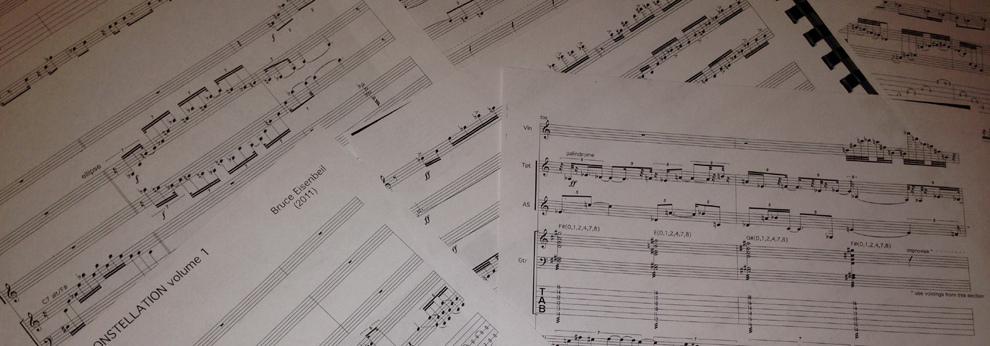

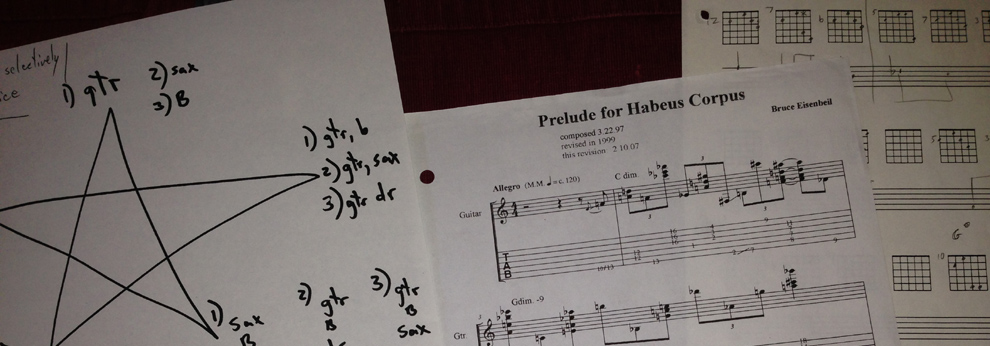
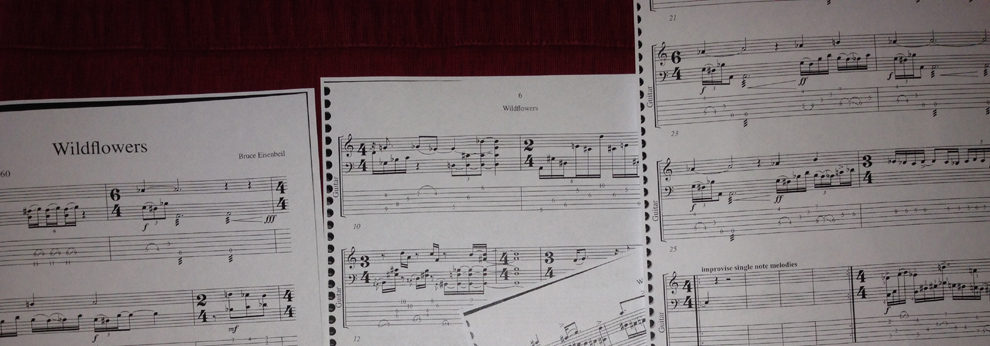








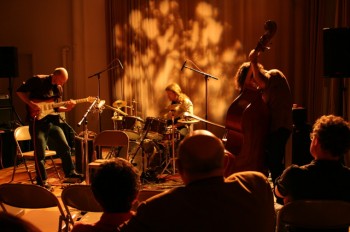
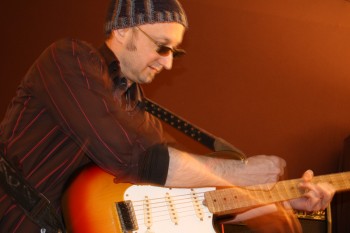
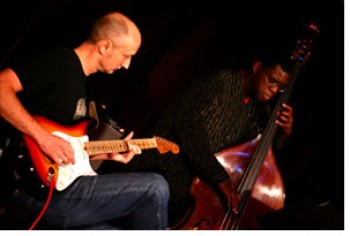
Social Profiles